In the winter season of cold, snow and holiday music, the North American bird breeding and nesting season seems months away. It’s not until the trees begin to bud and flowers bloom that the birdsong fills the air.
And that’s true. But not for great horned owls.
Winter is the time to enjoy the great horned owl breeding season–a time when these charismatic birds are much easier to see and hear.
It’s the hooting season.
Don a winter cap and head out to your local park or walking trail to enjoy one of the season’s coolest spectacles. Here’s what you need for your next owl outing.
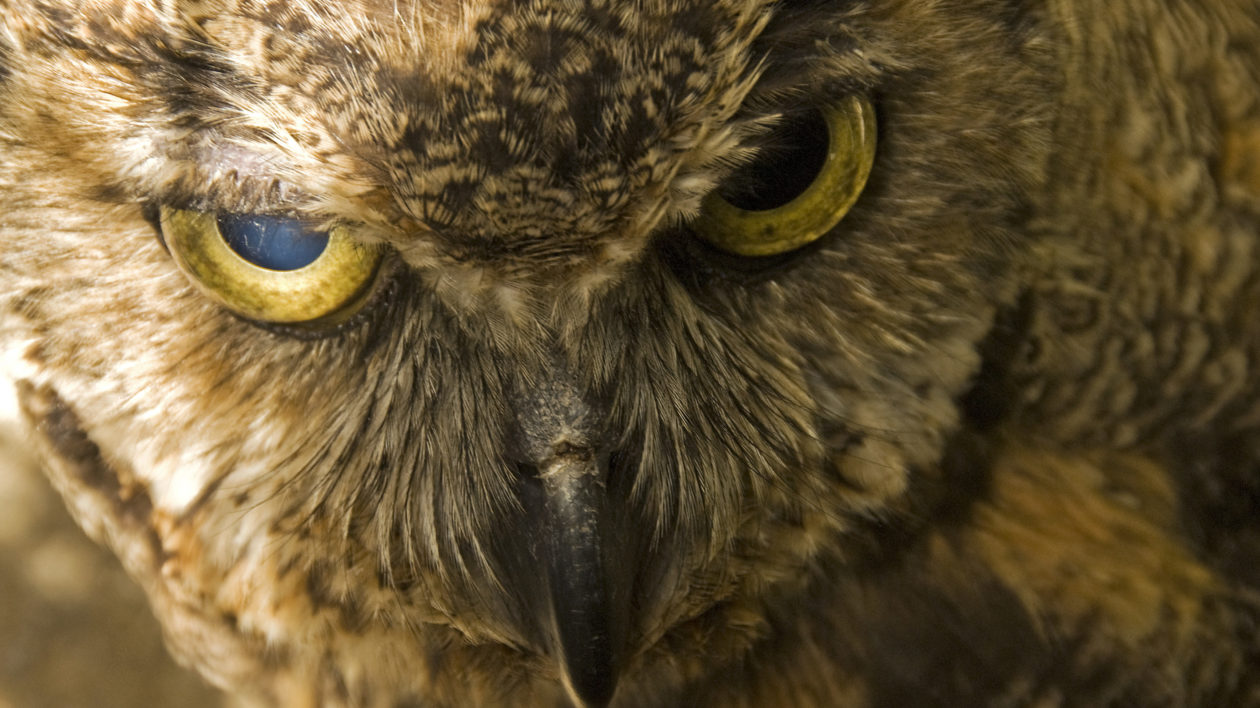
Into Owl Territory
The great horned owl, of course, is one of the most recognizable birds in the Americas, with its pointy feather tufts (the “horns”) and large fluffy appearance.
This is the prototypical “wise old owl,” and the owl of cartoons and children’s books.
It’s also incredibly adaptable, found from Canada to Patagonia, and most places in between. It is at home in desert and wetland, forest and prairie. And it also has no trouble thriving around people: you can find them in parks, farms, small woodlots, suburbs and cities.
Despite this, they’re not always easy to spot due to their nocturnal habits. But at this time of year, in the right location, a chorus of hoots provides the soundtrack to dawn and dusk.
That’s because, around October, male great horned owls begin setting up territories. Most great horned owls mate for life, but in the fall the pair begin a courtship display, loudly calling to each other.
Become a Member
Make a lasting impact for nature when you join The Nature Conservancy
The great horned owl’s hoot is pretty much unmistakable, although ornithology web sites often describe it in different ways. A common hooting pattern is a longer hoooooot, followed by two or three shorter hoots.
And these owls have a range of other vocalizations, too, some of which sound like barks or a screeching cat. (Cornell’s All About Birds site features some great audio of these different calls).
The owls continue setting up their territory this month, and begin setting up a nest.
They’ll use an abandoned nest previously used by a red-tailed hawk, squirrel or other critter. Come January, they’ll begin setting in the nest–far earlier than most other birds.
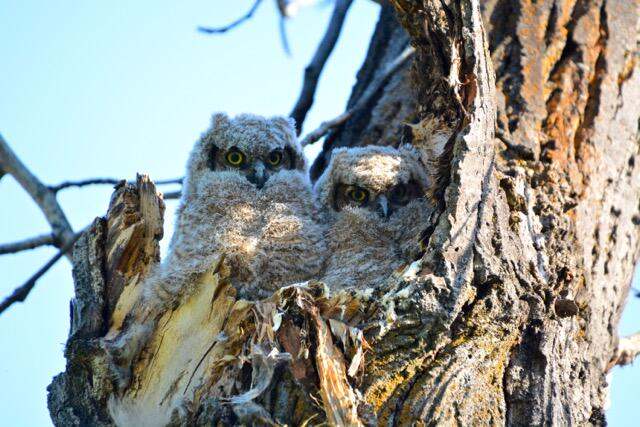
Why Do Owls Nest So Early?
Nesting early naturally entails some risk. Eggs must be kept warm and incubated, which can be a challenge when the temperature is in the single digits and snow is falling.
Female owls stay on the nest for prolonged periods (and when they leave to hunt, the male will take over).
If the eggs become too cold, they won’t hatch. This is why most birds wait until temperatures are warm and mild.
So: why nest early?
Owls are large birds. It takes them longer to grow and mature than, say, a songbird.
Young great horned owls must also master complex hunting maneuvers. They are equipped with superb senses – researchers have found that a great horned owl can hear a mouse rustling at 900 feet – but hunting still involves learning, trial and error.
Early hatching means they’re ready to practice their flying and hunting skills when the weather is mild and prey is abundant.
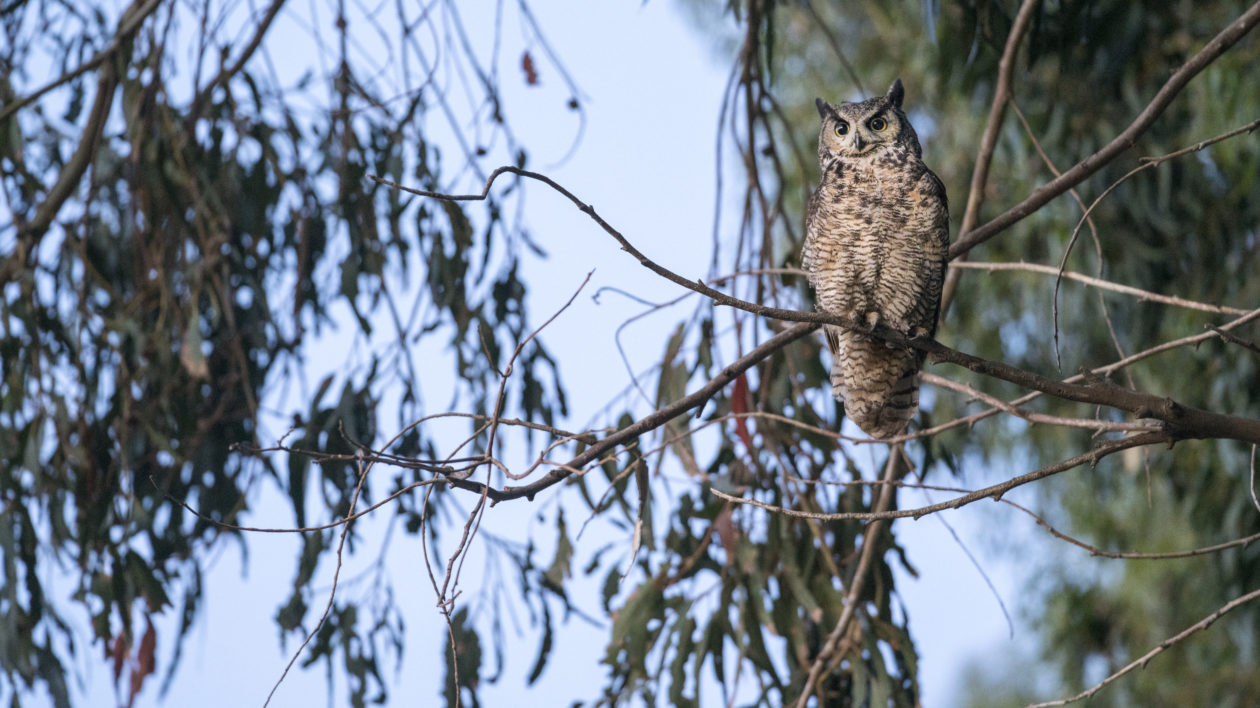
Enjoying the Owl Show
There’s likely a great horned owl territory near you. Now you just need to find it.
While owls can live in a variety of habitats, you won’t find them just anywhere. Focus on the edges. Owls prefer to have a good vantage point – a place where they can see out over the terrain.
Trees that overlook an open area are ideal. In particular, try to find a big-limbed tree that has shed its leaves (or a dead one). You can often find owls roosting there.
You can do a bit of scouting, too. Owls regurgitate the indigestible hair and bones of their prey: called owl pellets. You can often find a number of these pellets below preferred trees. (You can often reassemble the bones of mice by dissecting an owl pellet, another fun wintertime activity).
Of course, the easiest way to spot owls is not by looking, but listening. Those haunting hoots carry a long way. Sometimes you almost feel those hoots before you see them.
Once you hear the hooting, look carefully in likely trees, and you may be able to see the distinctive profile of the owl. Look through a binocular, and don’t be surprised if the owl is staring back at you.
It pays to quietly observe the owls for a while. I’ve been able to watch some interesting behavior, including owls mating.
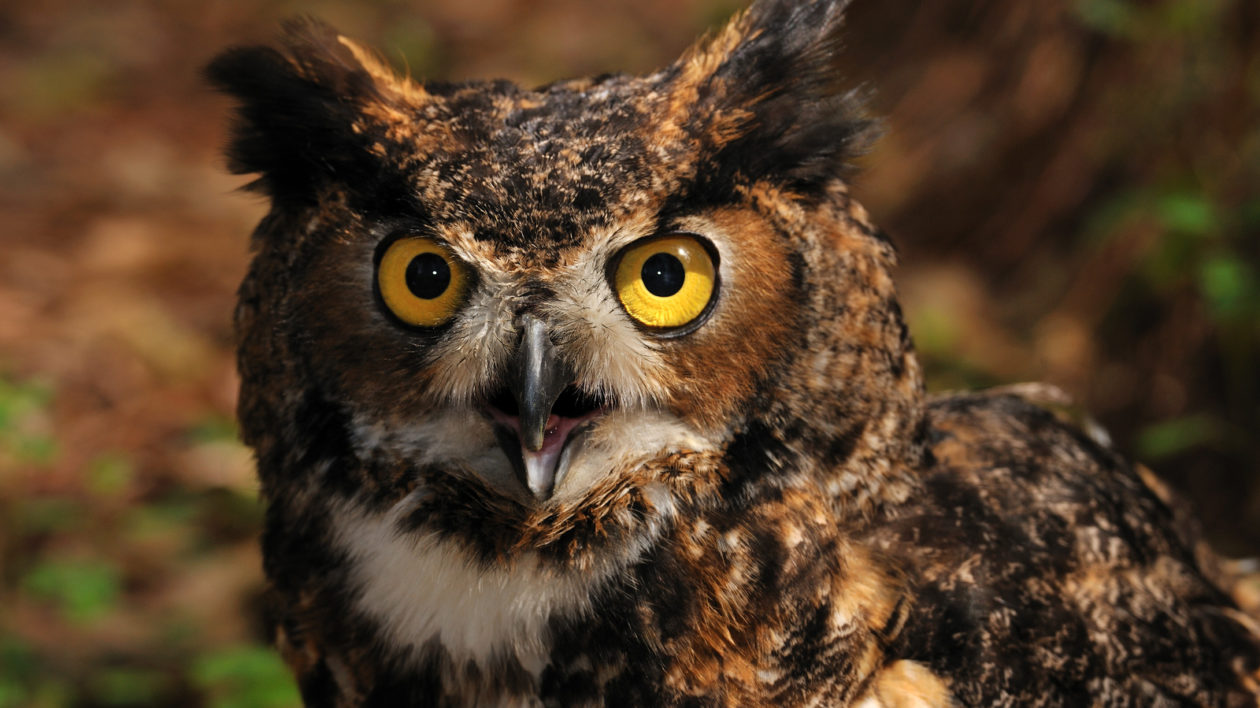
Photo © Mark Conlin, courtesy of Tallahassee Natural History Museum
My Owl Connection
Family lore holds that, long before I could utter words, I would lie in my crib and hoot like an owl. Perhaps my naturalist path was set, even then.
That story has been in my thoughts this year, as I prepare for the birth of my own son. The great horned owls, it seems, are everywhere. I see them perched on trees around our home and along the greenbelt jogging path; hear their calls in the canyons and river bottoms.
I’m always alert to the local wildlife, but this year, I can’t help but pay extra attention to all that owl activity.
I wake up in the middle of the night, thinking of my son and the world he’ll inhabit. And then, there it is: that deep hoot, hoot, hooting.
It seems to fill the room.
I snuggle under the covers and smile, filled with the hope that my son will find such comfort and joy in the wild things and their always-interesting ways.
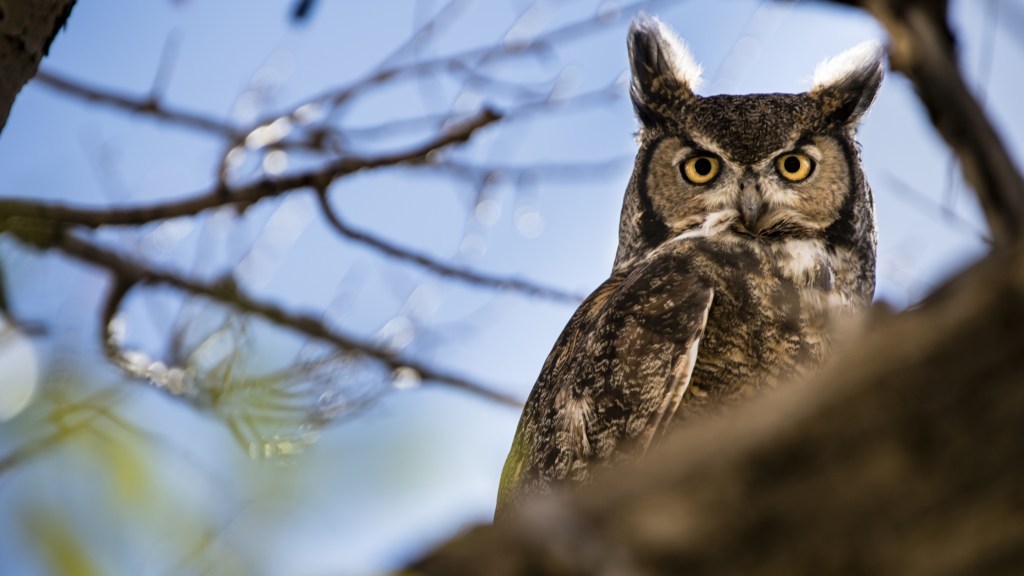



Do owls eat chickens my chickens keep getting killed the nights I hear them hooting
Heartwarming article. Exactly what I needed to read. I am very melancholy tonight. I am watching a crackling fireplace on my screen and wanted to hear some owls. I was on my way to find an owl hooting site when Matthew’s article popped up. I love the hoot of the owl. Only once have I heard an owl where I live in metro Denver.
Again this article has given me great comfort tonight – my dog of 16 years moved on this evening.
Well off I go to find my hooting owls. Don’t you just love how technology has enabled us to have these experiences when we really need it? I do….
Hi my name is Nancy I live in a sub division of track homes in New Mexico, 2 back yards behind me in a very big tree a horned owl lives during the day. Has been there all year. now that the leaves are gone it is no longer there but I will see it and its mate sometimes on the nearby roof tops in the evening and early morning. Do they usually find another tree to live in winter ?
This morning, in my back yard, there were two owls! It was wonderful! They sat there for a minute, and then took off. I could still hear them, after they left. I’m hoping they will nest somewhere real close. I got so very close to one! They were great horned with their tufted ears, and hooting. Anything I can do, to get them back?
The owls in Upstate South Carolina, just a bit south of Charlotte Douglas International, have been our neighbors ever since we moved here around 10-years ago. Along with many other interesting birds, the Great Horned Owl and the Coopers Hawk, have always lived in or near our property on Lake Wylie. The hawks are visible in the daytime, so I get to enjoy them visually more often than the owls. They will sometimes just sit in the trees around our yard and watch me as I come and go.
But back to the owls. It’s October 30th, just in time for Halloween, and it seems that the owls communications with each other have really peaked. Even as I write this, in the early morning hours I have enjoyed their calling back and forth to each other. Sounds like a chorus of 3-4 different birds this morning. What a treat!
My home backs up to farm land, vineyards in California. We have 3 large great horned owls that perch during the night on the top of a few telephone poles. There hoot is quite loud. How far will an owl travel at night to hunt? Is it likely they live close or do they travel far from home ?
Love hearing them. It’s a hoot fest outside our home on Csoe Cod tonight.
Should a hurt owl be returned to where you found it after it gets better
We have had a pair of Great Horned Owls living on our farm for longer than 15 years. This year however a barn owl showed up and seems to be harrassing the birds…The Great Horned calls for her mate all times of day and night, I see them often in the day. I am not sure if they are both here still, or if the Barn owl has been sucessful in taking over the shed in which i see them most often. I love my Great Horned Owls and would hate to think of them being pushed out of their home. Is there any way i can tell what is really going on?
Just heard some hooting in my new house in DE (mid-June). Two males. Might they be planning their territory now? I live near Bombay Hook National Wildlife Reserve.
Great Article. I was looking for info on GHO as I have a nest in my yard in a 85 ft white pine tree. I live in Dix Hills, Long Island. These are amazing birds, however my wife is so concerned for our 14 lb pekapoo dog (pekingese poodle mix). There are two very large fledgling in the nest and visible on the branch all day long. They can been seen stretching their wings often. I have taken lots of photos and I am fascinated with these birds. So they won’t reuse the nest again? Will the fledglings fly off to a new area to inhabit or will they stay in the area?
Great a horned owls in my back yard.
Two siblings stayed together on the tree for a few days without mom or dad.
Now there is just one.
Do they usually separate.?
Hi Joyce, It is common for one of the siblings to leave the nest before the other. Great horned owl eggs don’t hatch all at once, but are staggered and so the chicks are slightly different ages: https://www.fws.gov/refuge/Billy_Frank_Jr_Nisqually/wildlife_and_habitat/great_horned_owl.aspx Thank you for the question!
Had trees removed and two approx. 3 week old horned owlets (judging by fluff and feathers) fell with the tree. The nest was probably up there 70′. They survived and local authority had us make a nest with a laundry basket and put it in a tree if the parents are around. The two of them fill the basket. A snowstorm is predicted. Haven’t seen adults yet. Have questions no one will answer and I don’t know what to do.
Hi Laura, Thank you for your comment! I think your best option is to look for a wildlife rescue or rehabilitation center in your area and call them for advice. You might also try your state natural resources or wildlife department. Best of luck!
I am fortunate to have a horned owl roosting in my tree here in San Tan Valley Arizona my question is it’ll Roost there for about a week and then I won’t see him roosting in the tree for 3 or 4 days and then he is back for a week. So do they have different roost in there territory.
I cannot find any information online regarding, “after mating, how long before a Great Horned Owl will lay her eggs?”
Hope you can help?
Regards, Wayne